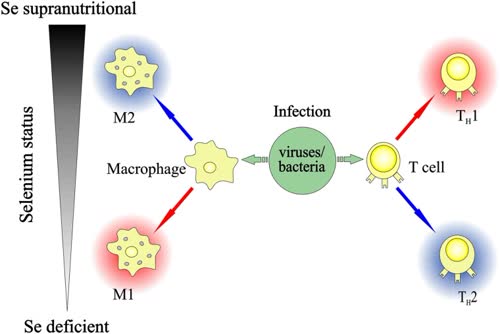Theraputic use of Selenium

Conventional wisdom dictates Selenium is a drug, a type of medicine to use used to cure sick people, a concept ancient Greek medical scholars would have been comfortable with. In the modern age it's usually thought of as a toxic pollutant and a poisonous heavy metal that causes illness in humans.

To be sure, it has metallic properties, it looks like a metal. Sort of. Look at any solar panel, it's made of selenium and it's a really odd sort of metal called a metalloid. You could think of it as the metallic form of sulphur which can be thought of as the solid form of oxygen as they're all in the same column in the periodic table and so some extent they can all replace each other in biochemical reactions.
This besides the amino acid cysteine, which has sulphur in it, there's also selenocysteine that has selenium instead. It's only been a decade or so since we discovered the need the immune system has for Se and we haven't long known of the existence of substances such as selenocysteine. As rare as that is, the chemical element Tellurium is also in this family and about the only use of it is to shine lasers off it as it alters the frequency of the light.
There is very little written on Tellurium in a therapeutic context, other than it Tellurium organic compounds are found in nature and substances for example Tellurocysteine is made in small amounts by certain bacteria.
This section is concerned with Selenium however, at this point far better understood. Tellurium shows promise in the future however in theory it can do 4x what Selenium can, however it is more toxic.
This is the two edged sword here: we live within a very narrow range: too little or too much is lethal to us.